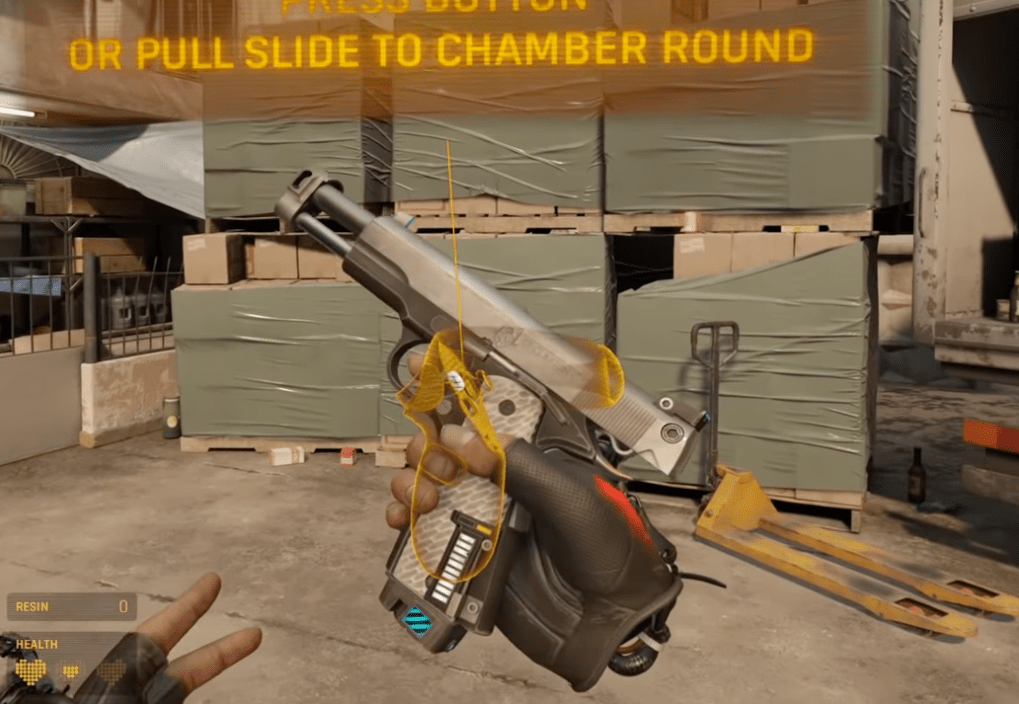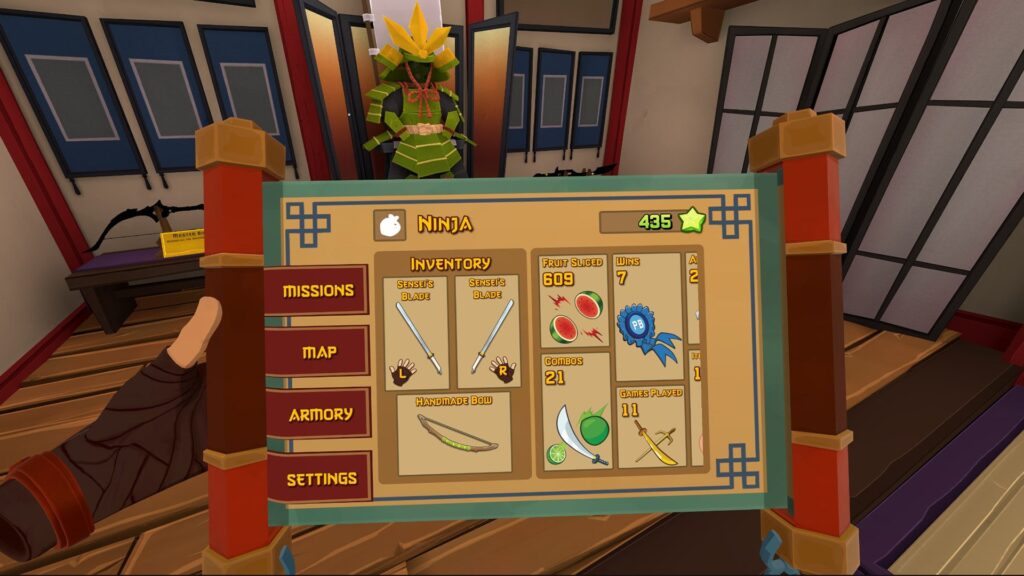· 8 min read
Creating VR Experiences: Challenges and Solutions for Designers

Sarah Impey
Content Creator at GameAnalytics
VR games are growing in popularity – with predictions that 23 million VR-related jobs will hit the market by 2030. And with better technology and increased interest, more and more developers are shifting towards this new field.
But even with better tools, online tutorials, and a larger community, making a VR game is still a challenge in the park. It’s very different from what you may be used to building. To get ahead, we’ve been doing our own research and interviewing the best VR devs to get their top-tier advice. So, here’s what we learned and what you need to know.
Controls being second nature
Depending on your audience, you can expect your players to have some experience with games in the past. They should understand controls and button layout, which may be different for VR.
For starters, VR controllers are a new concept. PlayStation and Xbox controllers have been around for decades and are usually the first thing people think of when you mention gaming. But unlike other platforms, your players can’t see their hands with VR. Saying ‘Press X’ isn’t enough in this situation. They can’t remember where it is or see their hands to figure it out.

Think up creative ways to lend them a hand. ‘Show, don’t tell’ is a handy tool here. You could have a semi-transparent image of their controller pointing out which button to press and showing exactly where it is on their controller. Seeing where the switch is on their controller can help them understand what they should be pushing. That’s what Half-Life: ALYX did, and it worked well for them.
Playing for hours upon hours
Unlike other platforms, people can’t wear their headsets for long periods. It’s very easy for players to experience eye strain, headaches, and motion sickness if they play their VR for too long.
So you may want to think about a target session length. Too long, and your players may quit halfway through with a pounding head. If you’ve created hyper-casual games before, then the rules of ‘keep it short, sweet, and satisfying’ can easily transfer to VR.
With that in mind, it depends on the type of game and players you have. Ramen VR’s Zenith MMORPG game saw players spending two hours at a time in their title. So take this section as a guide rather than a strict rule. Use data to listen to your players and find what works for them.
Cutscenes or forced camera perspectives
Cutscenes can be great to help tell your story or highlight important events. And in traditional gaming, it’s fine to shift your player away from first person and into a cut scene or even certain camera perspectives. But the sudden shift of perspective in VR can be very jarring and disorienting, if not done correctly.
The unique element with VR is that your players are always in a first-person view. So rather than watching from the sidelines, your players can be in those cutscenes, experiencing them first-hand.
Quick-time events
Quick Time Events, where players are prompted to press specific buttons within a time limit, are great for adding tension to your games. But not so great in VR. For one, the sudden change can break their immersion and slap them back into the reality of they’re just playing a game. And keep in mind that your players can’t see their controls, so they may struggle to react quickly if they’re also processing which button to press.
Focus on more natural and immersive mechanics to add tension. Or, if you want to add a time-based element, run focus groups to see if that’s what your players like. You’ll probably need to test this quite vigorously to find the right balance of fun and challenging without being overwhelming and disruptive.
HUD elements
In most games, you’ll have some key information on-screen (like health bars, mini maps, objective markers), which convey crucial information to your players. But in VR, these elements can hinder their immersion and obstruct their view.
So consider how you’ll relay this information without overloading your players. We recently interviewed Halfbrick Studios, the developers behind the Fruit Ninja series. When designing their HUD, they opted to instead create a pad with all of the info their players needed in the form of a ninja scroll. It made it so much more natural for the player and kept it in the game’s theme.

Don’t underestimate the power of level design here, too. You don’t always need to spell things out for your players. Having clear objects, buildings and landmarks with certain colours and shapes can help intuitively guide your players to where they need to go without relying on a mini-map. This technique has been used many times in open-world games, too.
Nintendo devs actually revealed that they use this technique in their Zelda games. Key landmarks were always in a triangular shape. When players saw those shapes (usually mountains), they had two options: walk around or climb up them. Both actions led the players in the right direction. This same technique can be used in VR, too.
Written information
The screen of your VR is right in front of your eyes. And that can sometimes be uncomfortably close, especially if you need to read things. Having too much text for your players to read can break the immersion, add to their eye strain, and cause headaches.
So you’ll want to get creative when relaying information. Using auditory or visual cues whenever you can keeps the players immersed but also eases up on their eyes.
Precision controls
When playing games on consoles, PC, or even mobile games, your players can get pretty precise with their aiming. When playing multiplayer games with a mouse and keyboard, a flick of the wrist is all your players need to do to target their enemies. With mobile, you just slide your finger across the screen.
VR games can be a little trickier. You will be directly mapping a player’s hand movement to virtual weapons, so they may not have the same level of precision. Consider what limitations you’re working with. And depending on your game, perhaps give the option to increase aim assist or develop mechanics that feel natural and responsive.
Robo Recall, one of the first games to come out on Oculus, tackled this quite nicely. Here’s what we could see:
- They used very clear visuals: You can grab weapons, enemies, and even bullets out of the air easily. There’s a clear white circle around where you can grab them, so you know exactly where to point your controller.
- Time slows when catching objects: In the game, all of the bullets coming at you are slowed down. One, to help you dodge (otherwise, you’d be overwhelmed). But you can also catch bullets and fling them back to the enemy. Lots of fun. But impossible to do in real time.
- They use larger hitboxes for items: You don’t need to be precise when catching or picking up objects. If you’re close enough to a weapon or object, you can easily summon it by pointing in its rough direction. This is very common in VR, considering how restricted players are when moving around.
Lots of assets
In most games, you’ll have lots of background objects to fill the scene. Otherwise, the game can feel bare and barren. The issue with VR, everything needs to be rendered twice (as you have essentially two screens). Not only that, but every object should arguably be interactive. If a player tries to pick something up and can’t, well, that’s just another reminder that they’re just in a game. It can be confusing to know what’s interactive and what’s just background stuff when you have loads of objects. And think about the frame rate and CPU power – the more you have, the more power you’ll need.
So you’ll likely have less clutter and objects in the background. But that’s okay. Just make sure that whatever you have in your levels, your players can engage with them in some way. Even if it is just picking up a mug and throwing it across the room.
We recently interviewed Schell Games, the creative minds behind ‘I Expect You To Die’ and ‘Among Us VR’. They had items in their game that didn’t do anything and were just there. But after testing, they noticed their players trying to interact with it. It led them to decide to make it a unique object that they could pick up and break.
Get started making VR games
Some of these techniques and rules may not always apply to you. That’s where data comes in. Sign up for free and download our SDKs to get going.